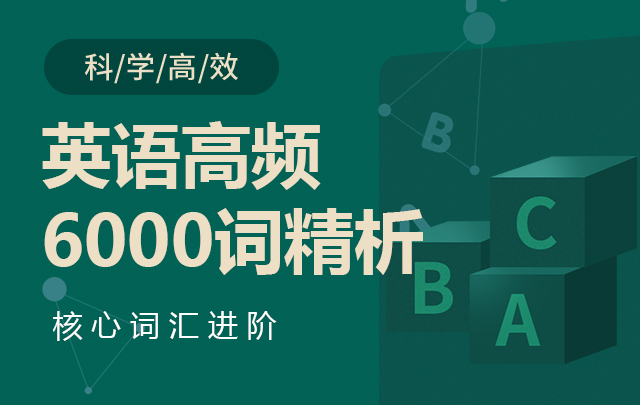British Judges Get Permission to Use AI to Help with Writing
英国法官获准使用AI助力写作
【听力音频】
----------------------------------------------------------------------
By Bryan Lynn
15 January 2024
Judges in Britain and Wales have been given permission to use artificial intelligence (AI) tools to help them write legal opinions.
The Courts and Tribunals Judiciary is the organization that oversees court systems and judges in Britain and Wales. It provided new rules on the use of AI last month.
While approving AI methods to support basic duties, the judiciary warned judges to never use such tools to carry out case research or legal examinations. The guidance said AI should not be used for those activities because the technology can produce false, misleading or biased information.
Geoffrey Vos is Head of Civil Justice in England and Wales. He told The Associated Press the new rules aim to permit "the careful use of AI" to help judges with parts of their jobs. Vos added, however, that judges "must ensure that they protect confidence and take full personal responsibility for everything they produce."
Vos told Reuters that judges are already well-equipped to differentiate between real arguments and those prepared by AI when considering evidence. "Judges are trained to decide what is true and what is false and they are going to have to do that in the modern world of AI just as much as they had to do that before," he said.
Vos said he even thinks the technology might be used in the future to help resolve low-level legal disputes. He noted this could one day help reduce the large number of unresolved cases in the justice system. "I rule nothing out as to what may be possible."
But Vos said he does not feel that people and businesses currently have the confidence to trust AI to independently resolve legal issues.
Ryan Abbott is a law professor at Britain's University of Surrey and wrote the book The Reasonable Robot: Artificial Intelligence and the Law. He told the AP there is currently a lot of debate over how AI should be legally restricted.
Abbott added that many people in the legal field are concerned about possible misuses of AI by lawyers and judges. "So I do think AI may be slower disrupting judicial activity than it is in other areas..." he added.
Court officials in some places issued rules years ago. In 2019, the European Commission body in charge of court systems issued ethical guidelines on the use of AI in courts. While the document is not current with the latest technology, it does offer guidance on accountability and ways to reduce risks linked to AI tools.
In the United States, the federal court system has not established any official guidance on the use of AI. But U.S. Supreme Court Chief Justice John Roberts did recently speak about pros and cons of the technology during a report on the high court's activities during 2023.
But individual courts and judges at both the federal and local levels have likely been setting their own rules, said Cary Coglianese. He is a law professor at the University of Pennsylvania.
Coglianese told the AP the rules approved by Britain's judiciary represent "the first, published set of AI-related guidelines in the English language." But he said he suspects "many judges" have already warned employees about the dangers of AI producing false information and possibly violating the privacy of individuals.
The new British guidance states that judges and court workers who have heavy job loads and write long decisions can effectively use AI as a valuable tool. This is especially true for judges and workers required to write background material or create briefs of existing information.
In addition to using the technology for emails or presentations, judges were told they could also use it to quickly find material they already know well.
But the guidelines warn that AI tools should not be used to find new information that cannot be independently confirmed. The judiciary's guidance also said the technology should not be used to provide detailed analysis or reasoning.
I'm Bryan Lynn.
The Associated Press and Reuters reported on this story. Bryan Lynn adapted the reports for VOA Learning English.
----------------------------------------------------------------------
作者:Gregory Stachel
2024年1月15日
科学家最近报告说,一种古老的大猿类物种可能在数十万年前消失,当时气候变化使它们在干旱季节无法触及最喜欢的水果。
这个物种被称为黑猿。它曾经生活在中国南部。它身高3米,体重高达295公斤。它是科学家已知的最大的大猿。
"这只是一种巨大的动物——真的非常大,"Renaud Joannes-Boyau说。他是澳大利亚南十字星大学的一名研究员。他帮助撰写了这项最近发表在《自然》杂志上的研究。
但它的体型也可能是一种弱点。Joannes-Boyau说,“当食物开始变得稀缺时,它太大了,无法爬树去寻找新的食物来源。”
这些巨大的猿类可能看起来类似于现代的猩猩。它在中国广西地区的森林地带生存了大约200万年。它们吃的植物包括水果和花朵——直到环境开始变化。
大约在60万年前,广西的森林开始产生的水果越来越少。该地区正在经历更多的干旱天气。研究人员检查了在地下洞穴中发现的花粉和沉积物,以了解更多关于这些变化及其影响的信息。
研究人员说,巨猿并没有迅速消失。它们可能在21.5万年到29.5万年前的某个时候灭绝。
随着气候变化,较小的猿可能已经能够爬树寻找不同的食物。但研究人员发现,巨猿吃的食物更多,但提供的营养却更少。这些营养较少的食物包括树皮和被称为芦苇的细草。
"当森林发生变化时,这个物种喜欢的食物不够了,"中国脊椎动物古生物学和古人类学研究所的张英奇说。他帮助撰写了这项研究。
科学家们对这种已经灭绝的大猿的了解大部分来自于研究它们的遗骸,或者化石。他们研究的化石骨头包括牙齿和四个大的下颌骨。所有的化石都是在中国南部发现的。没有发现完整的骨骼。
化石记录显示,大约在200万年到2200万年前,许多种类的大猿生活在非洲、欧洲和亚洲。如今,只有大猩猩、黑猩猩、倭黑猩猩、猩猩和人类仍然存在。
我是Gregory Stachel。
Christina Larson为美联社报道了这个故事。Gregory Stachel为VOA学习英语改编了它。
----------------------------------------------------------------------
故事中的词汇
ape – n. 猿,一种与猴子和人类密切相关的动物(如黑猩猩或大猩猩),全身覆盖着毛发,没有尾巴或尾巴非常短
massive – adj. 巨大的,重的
scarce – adj. 非常少的,数量或数量非常小
pollen – n. 植物产生的非常细小的通常是黄色的尘埃,通常通过风或昆虫被带到同种的其他植物上,以便植物可以产生种子
sediment – n. 由水或风带入水中的物质(如石头和沙子)
prefer – v. 更喜欢(某人或某物)比其他人或事物
本文关键字:
 免费试听
免费试听

时长 : 5:22 主讲 : 金格妃

时长 : 27:51 主讲 : 金格妃

时长 : 17:20 主讲 : 郭宁

时长 : 3:54 主讲 : 金格妃

时长 : 26:58 主讲 : 乔迪

时长 : 26:58 主讲 : 乔迪

时长 : 26:58 主讲 : 乔迪

时长 : 3:54 主讲 : 金格妃

时长 : 1:46 主讲 : 金格妃
 推荐阅读
推荐阅读
Webb Telescope Captures Images of 19 Spiral Galaxies 韦伯望远镜捕捉到19个螺旋星系的图像
来源 : 网络 2024-02-19 13:01:00 关键字 :
Student Academy Awards Provide ‘Momentum’ for Young Filmmakers 学生学院奖为年轻电影制作人提供“动力”
来源 : 网络 2024-02-19 11:48:00 关键字 :
Do You Have a Doppelg?nger ? 你有一个“分身”吗?
来源 : 网络 2024-02-18 11:37:00 关键字 :
Is Elon Musk Worth $55 8 Billion to Tesla?埃隆·马斯克对特斯拉来说价值558亿美元吗?
来源 : 网络 2024-02-18 11:32:00 关键字 :
Remembering Chita Rivera 记忆中的奇塔·里维拉
来源 : 网络 2024-02-16 11:26:00 关键字 :
Women to Take Center Stage at the Grammys 女性将在格莱美奖上占据主导地位
来源 : 网络 2024-02-16 11:20:00 关键字 :
Reduction and Assimilation 音节减少和同化
来源 : 网络 2024-02-15 11:13:00 关键字 :
Why Is Canada Limiting Foreign Students? 为什么加拿大要限制外国学生?
来源 : 网络 2024-02-15 11:07:00 关键字 :
It Has Never Been More Costly to See the Super Bowl 观看超级碗的费用从未如此高昂
来源 : 网络 2024-02-14 11:02:00 关键字 :
Australian Filmmaker Shows Japanese Single Mothers, Children Face Poverty 澳大利亚电影制片人展示日本单亲妈妈和孩子面临贫困的情况
来源 : 网络 2024-02-14 10:55:00 关键字 :


 精品课
精品课
价格 : 0元
限报人数:1000人
价格 : 0元
限报人数:1000人
价格 : 0元
限报人数:1000人
价格 : 0元
限报人数:1000人
 阅读排行榜
阅读排行榜
 相关内容
相关内容